A Spiritual Sojourn Through India’s Sacred Heritage
Embark on a 7-day journey through India’s most revered spiritual sites with The Golden Triangle Spiritual Sojourn. This meticulously curated tour by Yatra Veda blends Hindu, Jain, Sikh, Sufi, and Bahá’í traditions, offering a profound experience across Delhi, Agra, and Jaipur. Witness the grandeur of the Akshardham Temple, Taj Mahal, Amer Fort, and Fatehpur Sikri, while meditating in the serenity of ISKCON Temple, Gurudwara Bangla Sahib, and Khole Ke Hanuman Ji Temple—Experience India’s spiritual diversity like never before.
About the Tour Package
Discover the spiritual essence of India’s Golden Triangle with a guided tour covering Delhi, Agra, and Jaipur. This 7-day, 6-night journey takes you through temples, gurudwaras, Sufi shrines, and UNESCO heritage sites, offering a perfect blend of spirituality and history. Expect soulful aartis, kirtans, meditation sessions, and tranquil moments at some of India’s holiest places.
Trip Highlights
- Witness the magnificent Akshardham Temple and its awe-inspiring light and sound show.
- Offer prayers at the Lotus Temple, Gurudwara Bangla Sahib, and ISKCON Temple.
- Explore the Taj Mahal, a symbol of eternal love and spiritual beauty.
- Experience the tranquility of Guru Ka Taal Gurudwara and Fatehpur Sikri.
- Attend the Ganga Aarti at Galta Ji (Monkey Temple) in Jaipur.
- Visit Amer Fort and enjoy the mesmerizing Light & Sound Show.
- Pay homage at the Dargah of Salim Chishti, one of India’s most revered Sufi shrines.
- Explore Khole Ke Hanuman Ji Temple, a sacred site dedicated to Lord Hanuman.
Day 1: Arrival in Delhi – The Gateway to Spirituality
- Morning: Arrival in Delhi, check-in at the hotel.
- Afternoon: Visit Lotus Temple (Bahá’í House of Worship) for meditation and spiritual peace.
- Evening: Explore Akshardham Temple, witnessing the grand light and sound show.
- Dinner: Sattvic meal at a traditional Indian restaurant.
Lotus Temple
This Bahá’í House of Worship welcomes people of all faiths for silent prayer and meditation, promoting global unity and peace. The architectural marvel, shaped like a blooming lotus, symbolizes purity and enlightenment, offering a serene retreat from the bustling city.
Akshardham Temple
Dedicated to Swaminarayan, this temple showcases Hindu traditions, intricate carvings, spiritual values, and an enchanting light and sound show. The temple complex includes a mesmerizing Yagnapurush Kund, Sahaj Anand Water Show, and an exhibition that beautifully narrates India’s spiritual wisdom.
Day 2: Delhi – Spiritual & Cultural Immersion
- Morning: Visit the Jama Masjid for a peaceful start and experience the serenity of India’s largest mosque.
- Midday: Explore Gurudwara Bangla Sahib, participate in langar (community meal).
- Afternoon: Visit ISKCON Temple for soul-soothing kirtans.
- Evening: Stroll around Raj Ghat, paying homage to Mahatma Gandhi.
ISKCON Temple
A Krishna temple known for its melodious kirtans, Bhagavad Gita discourses, and serene environment for deep spiritual connection. The temple promotes bhakti yoga (devotion through music and prayer) and offers visitors an immersive experience in Vaishnavite traditions.
Gurudwara Bangla Sahib
A sacred Sikh site known for its divine sarovar (holy pond) and langar (community meal), emphasizing equality and humility. Pilgrims from across the world visit this shrine to experience seva (selfless service) and the healing energy of its holy waters.
Jama Masjid
One of India’s largest mosques, reflecting Mughal-era architectural brilliance and serving as a serene place for prayer and reflection. The mosque stands as a testament to India’s rich Islamic heritage and the philosophy of inclusivity.
Day 3: Delhi to Agra – Mughal Grandeur & Spirituality
- Morning: Depart for Agra (3-4 hours by road).
- Midday: Visit Taj Mahal, a symbol of love and devotion.
- Afternoon: Explore Tomb of Itimad-ud-Daulah (Baby Taj) for a peaceful retreat.
- Evening: Meditate at Guru Ka Taal Gurudwara, a lesser-known spiritual site.
Taj Mahal
Beyond its breathtaking beauty, this mausoleum represents undying love and spiritual dedication. Commissioned by Emperor Shah Jahan for his wife Mumtaz Mahal, the Taj Mahal reflects Persian and Indian architectural harmony, symbolizing divine union.
Guru Ka Taal Gurudwara
A lesser-known but significant Sikh site where Guru Tegh Bahadur meditated before sacrificing himself for religious freedom. The Gurudwara is an important pilgrimage centre, commemorating Sikh valour and sacrifice.
Itimad-ud-Daulah (Baby Taj)
A peaceful retreat blending Persian and Mughal architectural styles, this tomb represents transition and artistic evolution. The intricate marble inlay work and serene gardens create an atmosphere of deep reflection and peace.
Day 4: Agra to Jaipur
- Morning: Drive to Jaipur, en route visit Fatehpur Sikri and Dargah of Salim Chishti, a revered Sufi shrine.
- Midday: Continue journey, check-in at a Jaipur heritage hotel.
- Evening: Attend Ganga Aarti at Galta Ji (Monkey Temple) for a divine experience.
Galta Ji (Monkey Temple)
Nestled between the Aravalli Hills, this ancient pilgrimage site features natural water springs, sacred kunds (water tanks), and stunning temple structures. Devotees believe that bathing in these kunds cleanses sins and bestows blessings.
Day 5: Jaipur
- Morning: Visit Birla Mandir, a stunning marble temple.
- Midday: Explore Govind Dev Ji Temple, dedicated to Lord Krishna.
- Afternoon: Visit Sri Digambar Jain Temple, a peaceful retreat for meditation.
- Evening: Explore Amer Fort’s Light & Sound Show, telling tales of devotion and valor.
Birla Mandir
Constructed entirely from white marble, this temple is dedicated to Lord Vishnu and Goddess Lakshmi, signifying purity and prosperity. The intricate carvings narrate Hindu epics, while its tranquil ambience offers visitors a space for spiritual contemplation.
Govind Dev Ji Temple
One of the most revered Krishna temples in India, this temple houses an idol believed to have been personally blessed by Lord Krishna. The temple is a central hub for bhakti traditions, hosting daily aartis and festivals like Janmashtami with grandeur.
Sri Digambar Jain Temple
One of the most important Jain temples in Rajasthan, it reflects the philosophy of Ahimsa (non-violence) and Jain spiritual wisdom. The temple’s intricate murals and peaceful sanctum create a perfect atmosphere for meditation and introspection.
Day 6: Jaipur to Delhi
- Morning: Visit Khole Ke Hanuman Ji Temple, a famous Hanuman shrine.
- Midday: Drive back to Delhi.
- Evening: Visit Laxminarayan Temple (Birla Temple) in Delhi for a final spiritual closure.
Khole Ke Hanuman Ji Temple
This temple, dedicated to Lord Hanuman, attracts thousands of devotees seeking strength and blessings. The chanting of Hanuman Chalisa, especially on Tuesdays and Saturdays, fills the air with divine energy.
Day 7: Departure
- Morning: Leisure time for self-reflection or a visit to Delhi’s Lodhi Garden for a peaceful walk.
- Afternoon: Departure from Delhi with divine memories.
Inclusions:
- Accommodation in handpicked hotels and retreats.
- Daily sattvic meals (breakfast and dinner).
- All intercity and local transfers in air-conditioned vehicles.
- Guided tours of all temples and spiritual landmarks.
- Entrance fees to monuments and temples as per itinerary.
- Participation in meditation sessions and aartis.
Exclusions:
- International and domestic airfare.
- Personal expenses such as tips, laundry, and souvenirs.
- Meals not mentioned in the itinerary.
- Travel insurance and medical expenses.
Q- What is the best time to take this Golden Triangle Tour Package?
Ans. The best time is between October and March, when the weather is pleasant and ideal for temple visits.
Q- Is this Golden Triangle Tour suitable for elderly travelers?
Ans. Yes, we ensure a comfortable experience with well-paced itineraries and minimal strenuous activities.
Q- Are non-Hindus allowed inside all temples?
Ans. Most temples welcome visitors of all faiths, but some have restrictions. Our guides will provide details accordingly.
Q- What kind of food will be served?
Ans. We provide sattvic vegetarian meals, focusing on purity and nourishment.
Q- Will there be free time for self-exploration?
Ans. Yes, the itinerary allows for personal reflection and independent exploration at select locations.
Q- Can special requests for dietary restrictions be accommodated?
Ans. Absolutely! Let us know your requirements in advance, and we will make the necessary arrangements.

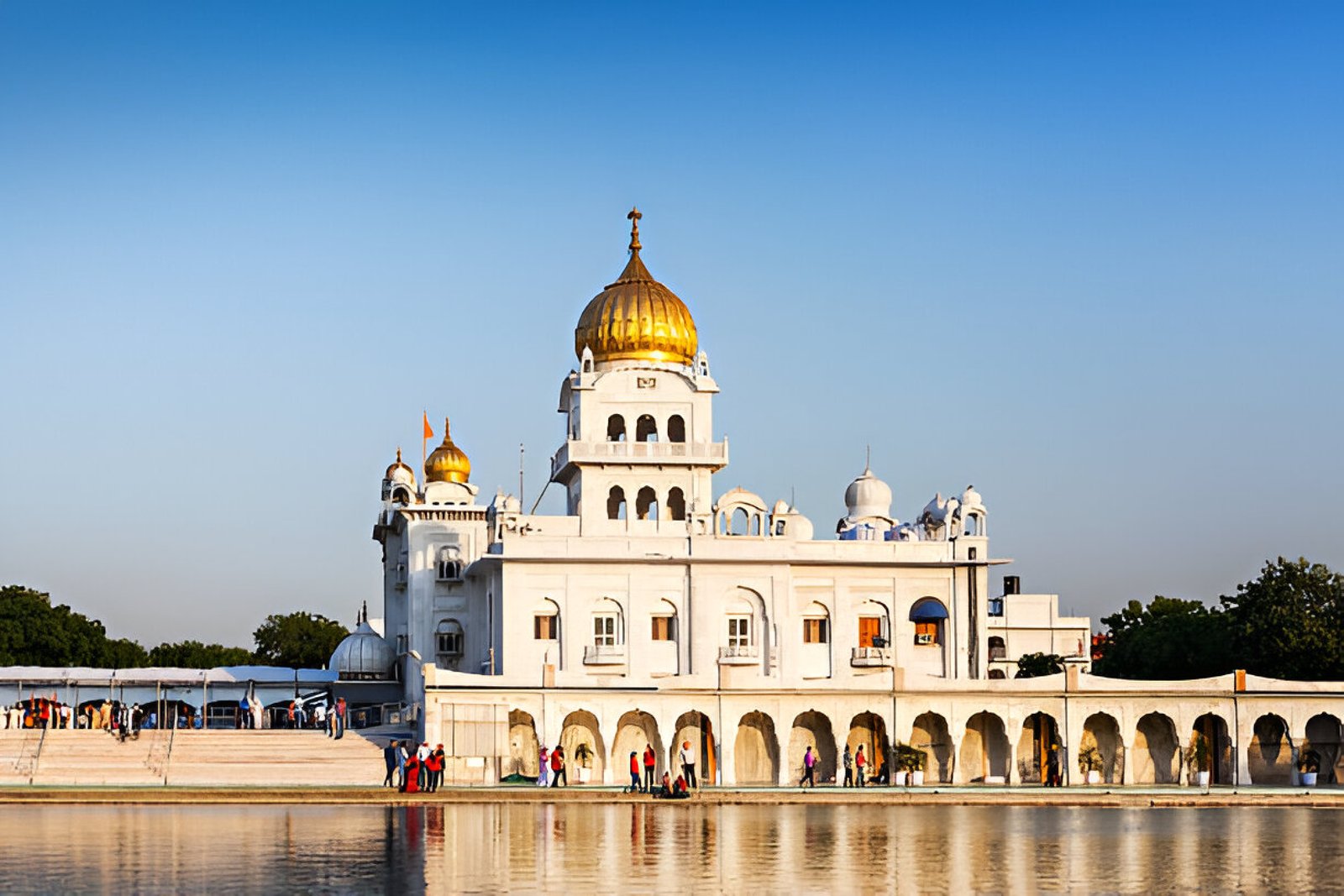
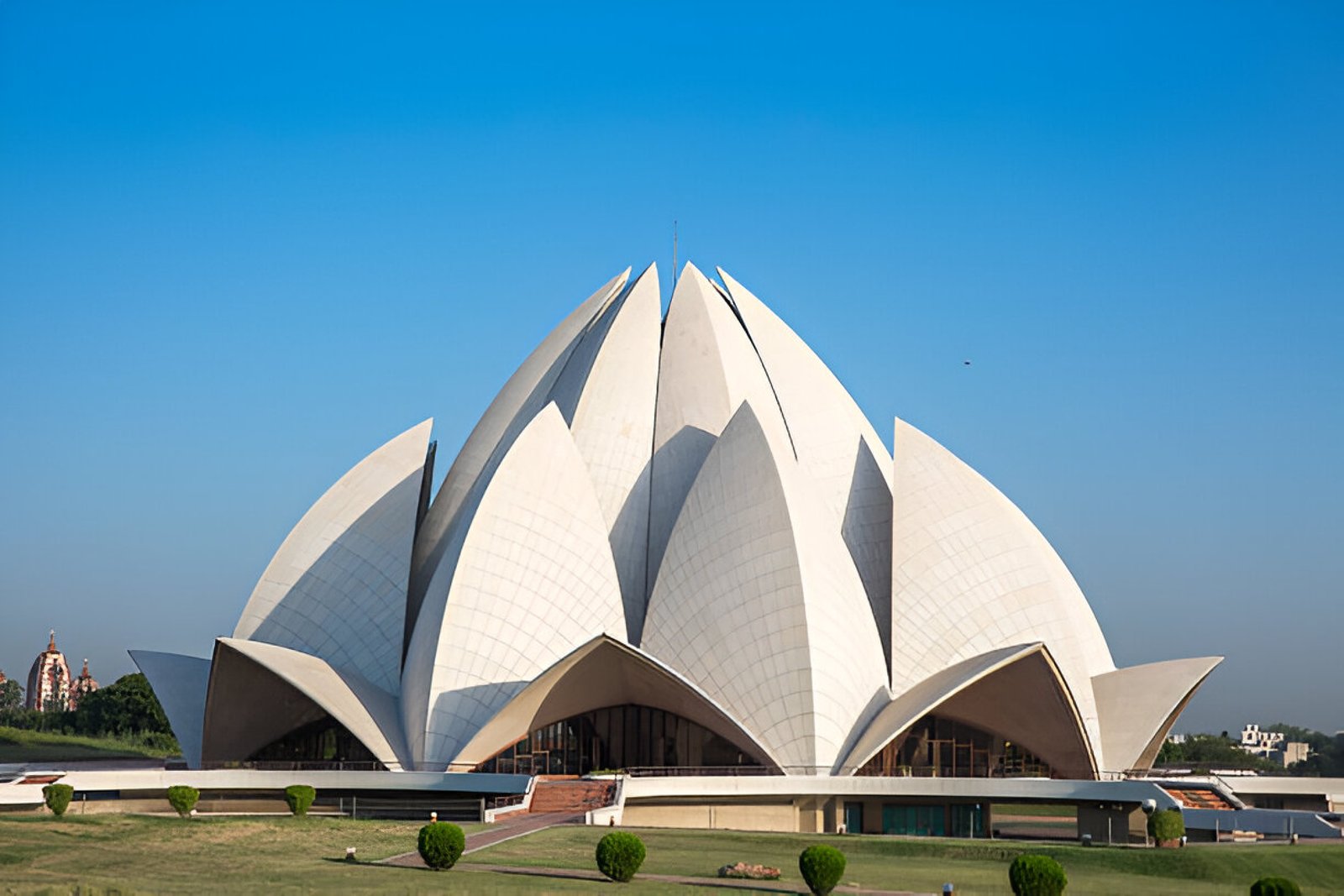
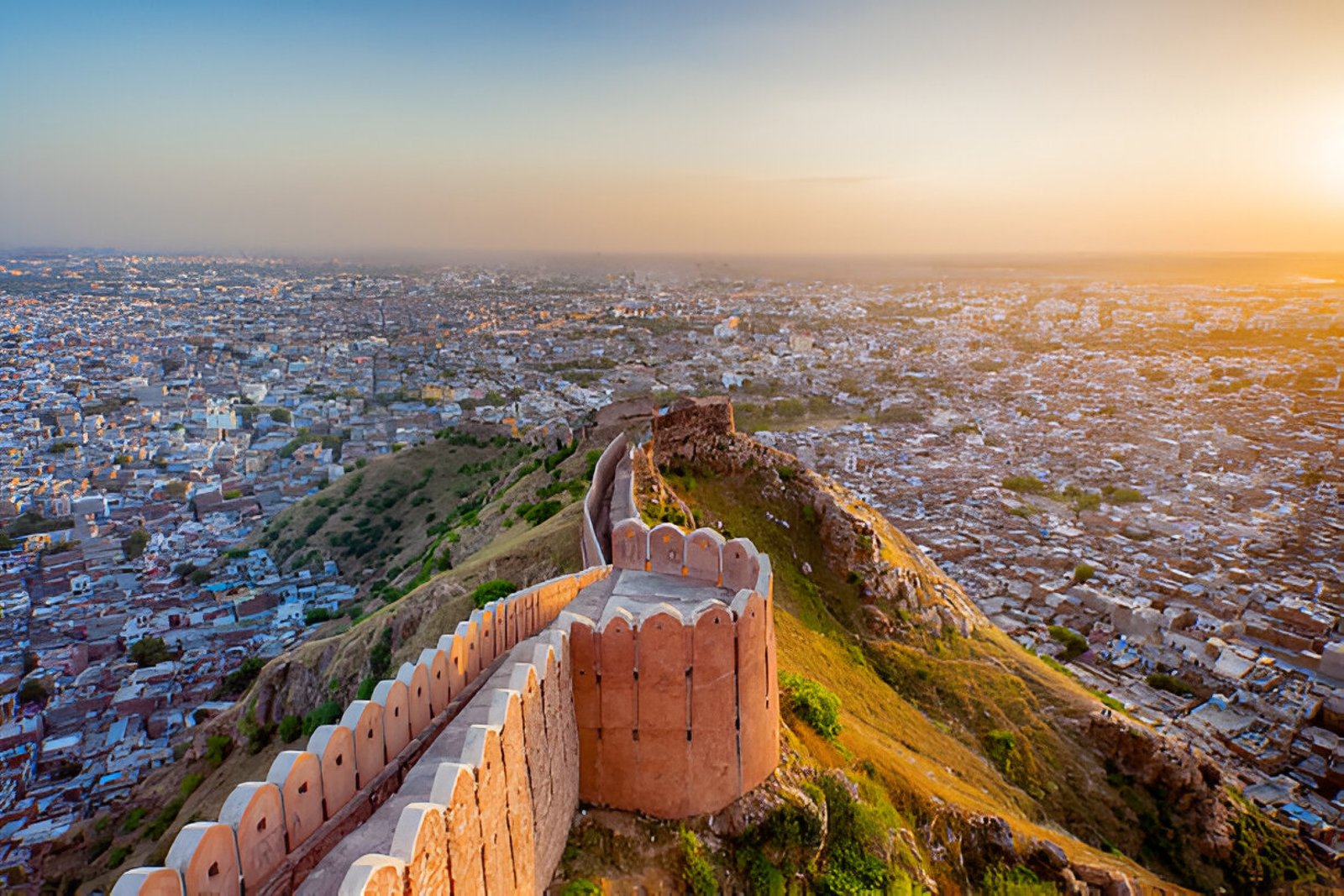
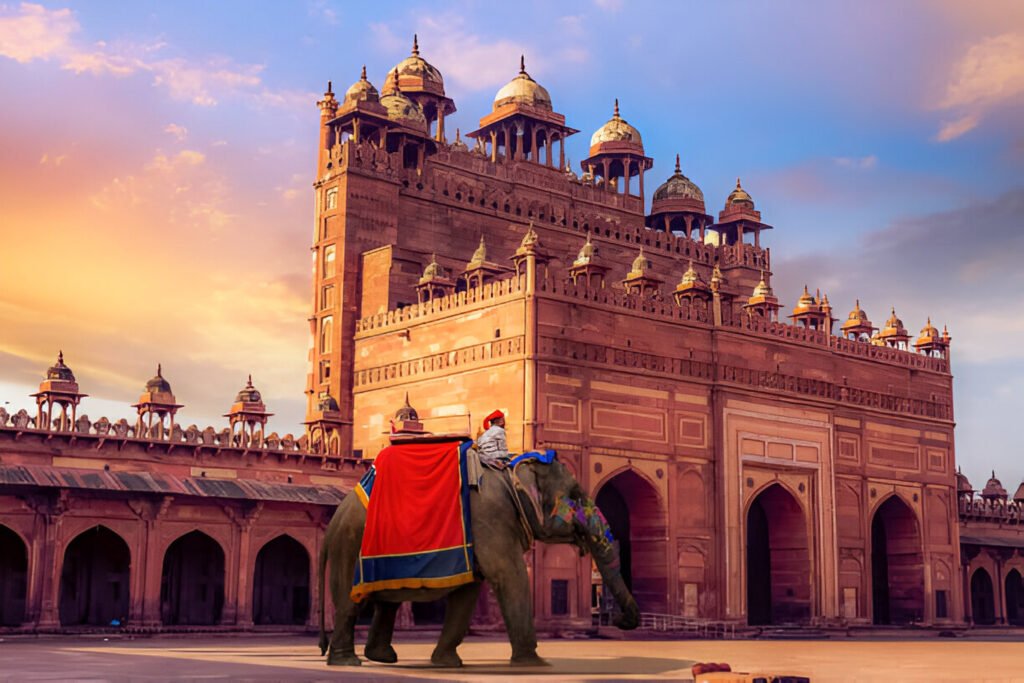
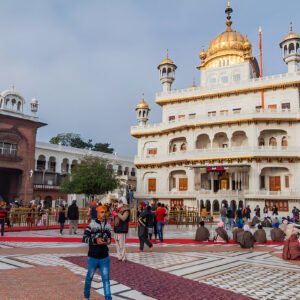



Reviews
There are no reviews yet.